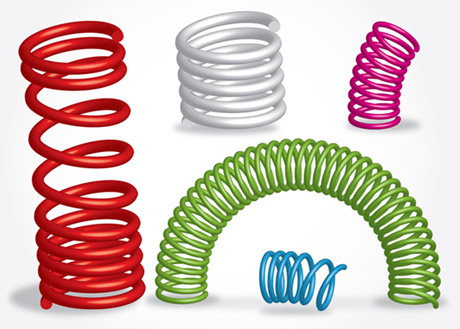Spring is an elastic machine element that stores energy and released will recover to its basic form or position.
Springs are used in spring balances, also called forcemeters for weighing. They act as load measuring devices and instruments such as gages, meters and engine indicators
Springs are used to store energy in watch and clock springs or door-closing springs.
Springs absorb energy or shock loads as in automobile chassis to give you a more comfortable ride and are part of the suspension of a car. Used in railroad bumper springs.
They also reduce vibration by using vibration isolators.
Springs also produce a pressure or force as in surfaces of clutches and as keeping a cam follower in contact with a cam.
Springs have different shapes depending on what they are used for. A weighing spring, for example, is normally wound as a helix. Watch springs are wound as spiral coils. Sets of flat bars or leaves are used as leaf springs in car suspensions.
Switches have springs - think of your lightswitch. Some mattresses and chairs have springs. If you have a certain type of electric door bell, this also has a spring. You might have seen some clockwork toys - these have a key that winds a spring so energy is stored and then can be released. If you have a bike, look at the saddle - does it have springs?
Source:
http://www.zephyrus.co.uk/springsanswer.html
Visit my blog http://amazingcharlie.blogspot.com/









